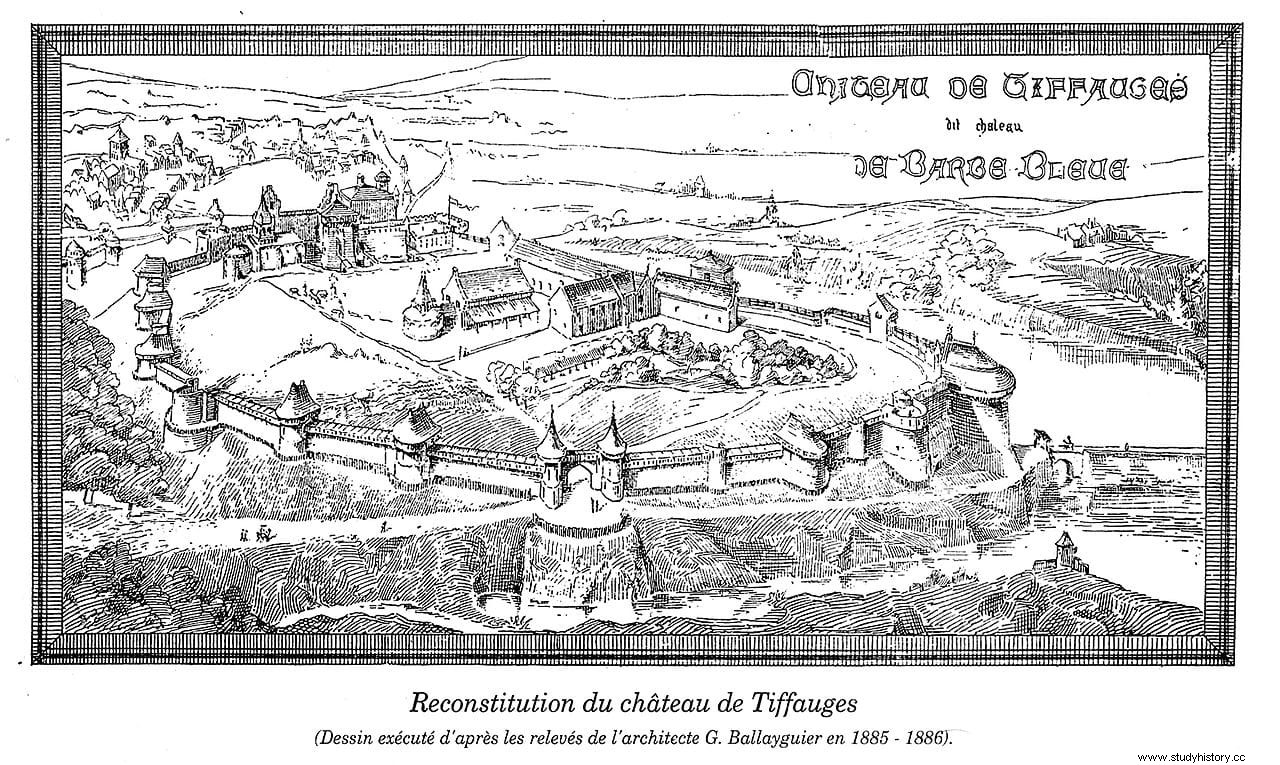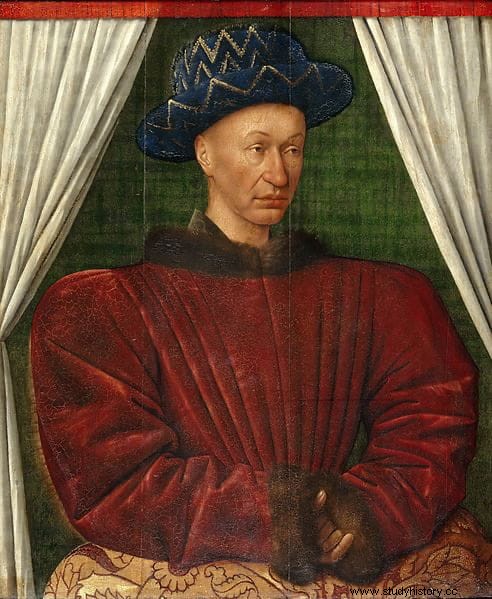In the fall of 1992 the French Court of Cassation, the highest court for judicial appeals, cleared a defendant of all guilt. Until then, all normal. The extraordinary thing was that he had been advised by a jury made up of jurists, historians and psychologists, and that the graceful man had been hanged five and a half centuries earlier, so that only his memory could be rehabilitated. A totally sinister memory that turned him into one of the most abominable beings in the news:Gilles de Rais.
The name may not be familiar to many people, but he occupies a place of dubious honor in the darkest part of history, alongside characters like Vlad Tepes or Erzsébet Bathory, often referred to as bloodthirsty monsters even in times when horror was part of everyday life. Serial killer, pederast, infanticide, sadistic torturer, devil worshiper, sodomite and heretic are some of the adjectives with which he has gone down in history and that led him to end tragically, despite his very rancid nobility and his position as Marshal. from France. But some researchers believe that perhaps things were not as said and that is why the new process was opened, which is now twenty-five years old.
If one travels through the northwestern Gallic area, the one bathed by the Loire river, it has, among many other things, two attractions that are usually visited together:the Puy de Fou, an amusement park with a historical setting, and the nearby Tiffauges castle, in the Vendée, where Gilles de Rais settled from 1434, when he fell into disgrace after losing his position as marshal.

He was born as Gilles de Montmorency-Laval, heir to the Rais baronage, in another castle (that of Champtocé) in 1404. He was still a child when his parents died and he was raised by his grandfather, a violent and despotic man who surely influenced his character. Gilles entered the service of the Duke of Brittany, Juan de Montfort, participating in the War of the Breton Succession, a regional conflict that lasted twenty-three years and pitted several illustrious lineages against each other, with the Montforts ultimately victorious.
Apparently, Gilles stood out as a warrior, reaching a popularity that allowed him to carry out his first important whims, such as kidnapping the one made by his wife, Catherine de Thouarscon, given the opposition of his parents to that marriage. . When seven years later her daughter Marie was born to her, Catherine fled with her, they say because of the homosexuality she had discovered in her husband. This one, however, did nothing to stop him.
These original episodes have served to settle the classic image of the character, which would later hatch into the presumed degeneration outlined at the beginning. But in between you have to insert a completely different period, that of his social, political and military rise thanks to the Hundred Years' War; a dispute that had ravaged the country ever since in 1337 the young English king Edward III claimed his right to the throne of France as the grandson of Philip IV the Handsome , once Carlos Capeto died without leaving descendants.
From 1429, Gilles fought alongside Joan of Arc and other prestigious generals against the English and Burgundians in defense of the interests of Charles VII, the Dauphin. He participated very meritoriously in the battles of Jargeau and Patay and became an escort to the Maid of Orleans of her, whom he idolized ( «In her presence and for that brief period of time, I went with God and killed for God» ), obtaining the appointment of Marshal of France with only twenty-four years. Carlos managed to crown himself and put an end to that devastating war, but not without sacrificing some pieces.

One of them was Juana, captured in 1431 and executed at the stake on charges of heresy due to the apparent immobility of the monarch who owed her the throne. Gilles did try to free her but he did not arrive on time and that chapter would mark her life forever. The other sacrificed piece, the fall from grace of the one who until then had been his protector, the Royal Chamberlain, led to his own; Gilles left the army and retired to the aforementioned castle of Tiffauges. Thus the parenthesis of glory was closed and a new and macabre -but discussed- stage was opened.
In it, if we pay attention to the chronicles, he practically did not fail to prove any aberration or evil. Enriched by the rewards he received for his military services, he threw himself into a life of luxury and extravagance (ostentatious banquets, spectacular parties, lavish theatrical performances) that he combined with a somewhat thoughtless generosity, which, at one time, led him to deplete your funds. In the same way, he saw no contradiction in manifesting an exacerbated religiousness, almost mystical (and often caused by listening to sacred music), while hiring all kinds of alchemists, magicians and necromancers to try to make gold for him.
With one of them, they say, he had a love relationship. It was a Florentine sorcerer named Prelatti, who took advantage of his lover's fear of the devil to manipulate him at her whim through apparently very convincing setups. Between one and the other he soon gained a bad reputation (alchemy had been prohibited by Carlos VII) and rumors began that he sent his pages to kidnap children to sacrifice them in satanic ceremonies. Suddenly, mass disappearances began to be reported in the region and it was also said that before killing them he raped and tortured his victims, enjoying their suffering.

Eight years passed with the ball growing little by little and finally it was a confrontation with the bishop of Nantes over a real estate issue - the sale of one of the castles, which Gilles clumsily managed by seizing and locking up one of the buyers to sell it to a better bidder- which led to his downfall. On September 15, 1440 the Duke of Brittany ordered the arrest of him next to the court of thaumaturges of him.
The records of the trial are preserved, detailing how Gilles de Rais showed a cyclothymic temperament, going from aggressiveness to depression, from declaring his innocence to assuming his guilt and from bragging about his actions to feelingly repentant. Accused of the death of a hundred and a half children, whom he would also have subjected to indescribable torments ( "in various ways and unheard of perversion" according to George Bataille in his work The Real Bluebeard ), Gilles was hanged on October 16 of that same year on an island in Nantes and his body cremated. The facts ended and the legend began.
But in 1992 the Brittany Tourist Office commissioned a biography of the character to promote the Château de Tiffauges, which had just been added to its tourist offer. The designated writer, Gilbert Proteau, presented a surprising work entitled Gilles de Rais ou la gueule de loup (Gilles de Rais or the face of the wolf), in which he concluded that everything related to the criminal image of Gilles de Rais was false and proposed a review of the trial. That book unleashed a revisionist current that allowed the case to reach the Court of Cassation and for it to exonerate the monster.

The truth is that many historians and scholars of his figure already doubted the veracity of the events that led him to the gallows. An example is the English writer Margot K. Juby, who usually half-jokingly defines herself as a "representative of Gilles de Rais" and since 2010 has published on an open website ex profeso all the documents that she finds about it; obviously, she has gained a new momentum this 2017 by celebrating the twenty-five years of judicial rehabilitation.
For Juby, as for many others, Gilles de Rais was the victim of a kind of conspiracy in which, to a greater or lesser extent, the Crown and the Church participated. The fact that he was ruined made him a desirable prey for those who aspired to take away his castles and lands, the last thing that remained of his estate. Jean de Malestroit, who was Bishop of Nantes and who initiated the process, benefited from the death sentence, as did the Duke of Brittany himself. Both shared their properties and saved the debts they had contracted with him. It is not trivial that it was a religious who initiated the accusation; Let us remember that Gilles de Rais was one of the pillars of Joan of Arc, condemned as a heretic, and the strange thing is that she had not been persecuted before her.

Every year tens of thousands of children disappeared in France (and throughout Europe) whose parents never heard from them again, but in that area only eight were reported and, as far as the accused was concerned, no mortal remains of the victims were found.; even if he had burned their bodies, as was said at the trial, it seems quite unlikely that not the slightest trace was left. It was said that his brother had found skeletons in one of the castles and that she covered for him. Always the “it is said”, “they say that”, “it is rumoured”, but without concrete proof; not a bone, not a tooth... Only the confused testimonies of peasants, collaborators (under torture) or his self-confession (induced by the threat of excommunication, which he feared above all else).
The medievalist John Hosler also highlights that the process is a sample of common standards of the time that lead to distrust:sodomy, heresy... He admits that there have always been criminals and that it is difficult to prove the innocence of Gilles de Rais with the trial records in your hand, but you think maybe you have to read between the lines. Similar things were said in the trial to the Templars that are no longer sustained today, and it should be noted that Charles VII reproached the Duke of Brittany for leaving the trial in the hands of the Inquisition; somewhat hypocritical if another argument from historians is taken into account, that the event was part of the struggle between royal and feudal authority and that the Gallic monarch took the opportunity to get rid of an overly powerful lord whose host roamed freely through Brittany .
All the works carried out on the case since then -and we are talking about more than two hundred- were identical because the source from which they drank, not exactly impartial, was the official version published in 1443; Worse still, most of them did not even go to it but based themselves on the nineteenth-century work of Paul Lacroix, full of characteristic fanciful romanticism:Huysmans, Reinach, Fleuret, Bayard, Bossard, Bataille, Perrault...
However, how could it be otherwise, there are also critics of Proteau and the decision of the Court of Cassation, such as Oliver Bouzy, who accuse them of a lack of rigor, so that it is impossible to determine the facts with accuracy. Thus, a quarter of a century after his acquittal, Gilles de Rais continues to appear in the media as a bloodthirsty beast; In addition to his life and property, he also lost the propaganda battle.
